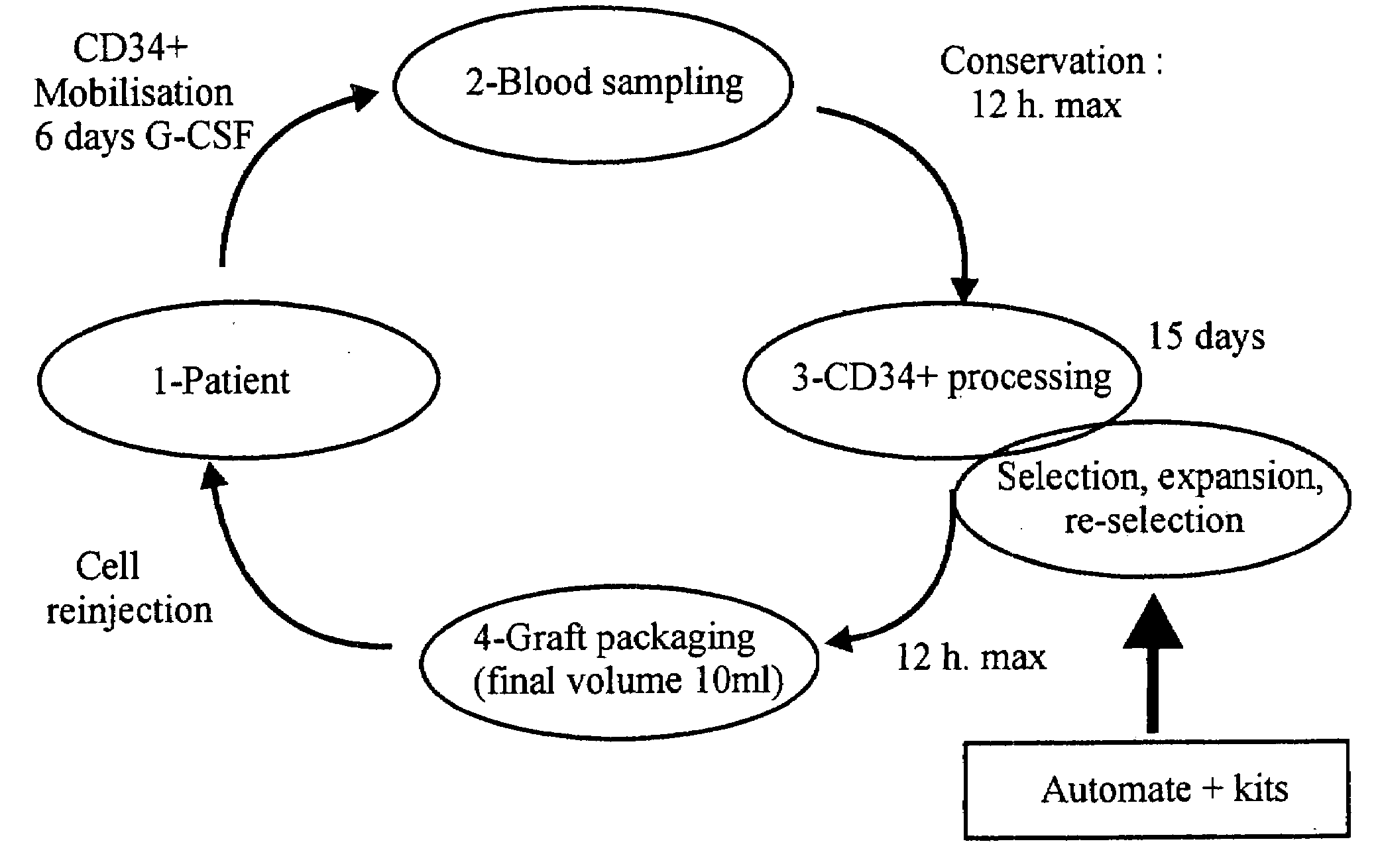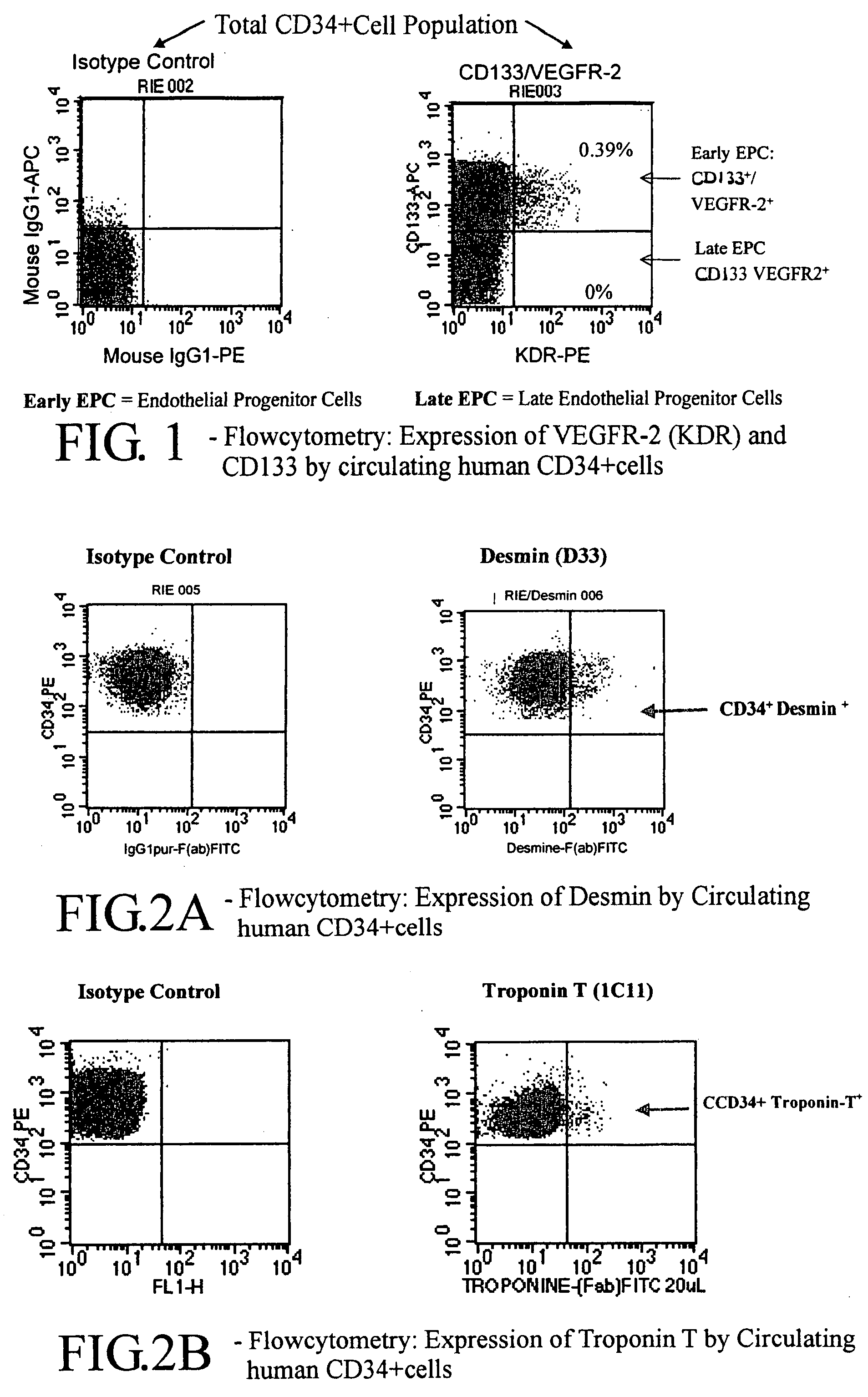Process to cary out a cellular cardiomyoplasty
- Summary
- Abstract
- Description
- Claims
- Application Information
AI Technical Summary
Benefits of technology
Problems solved by technology
Method used
Image
Examples
Embodiment Construction
[0064]Intending to clinically develop the preliminary data, a clinical phase-I trial to assess the feasibility, the safety, and the potential impact on cardiac function of G-CSF-mobilization, collection, selection and intra-cardiac reinjection of autologous blood CD34+ cells was started.
[0065]Ten patients were scheduled according to following criteria: transmural AMI greater than 2 weeks; isotopic left-ventricular ejection fraction (LVEF) ≦35%; distinct area of akinesis corresponding to the area of infarction in the left ventricular wall; candidates for coronary artery by-pass graft (CABG); age 201thallium scintigraphy, and Positron Emission Tomoscanography (PETScan) after successive intravenous injections of 18FI-FDG and of 201Ti-Chloride to evaluate both myocardial viability and perfusion.
[0066]After patient's informed consent, mobilization of CD34+ cells was started 7 days before the CABG by sub-cutaneous injections of G-CSF (Granocyte® kindly provided by Chugai France), 5 μg twi...
PUM
| Property | Measurement | Unit |
|---|---|---|
| Time | aaaaa | aaaaa |
| Time | aaaaa | aaaaa |
| Time | aaaaa | aaaaa |
Abstract
Description
Claims
Application Information
 Login to View More
Login to View More - R&D
- Intellectual Property
- Life Sciences
- Materials
- Tech Scout
- Unparalleled Data Quality
- Higher Quality Content
- 60% Fewer Hallucinations
Browse by: Latest US Patents, China's latest patents, Technical Efficacy Thesaurus, Application Domain, Technology Topic, Popular Technical Reports.
© 2025 PatSnap. All rights reserved.Legal|Privacy policy|Modern Slavery Act Transparency Statement|Sitemap|About US| Contact US: help@patsnap.com



